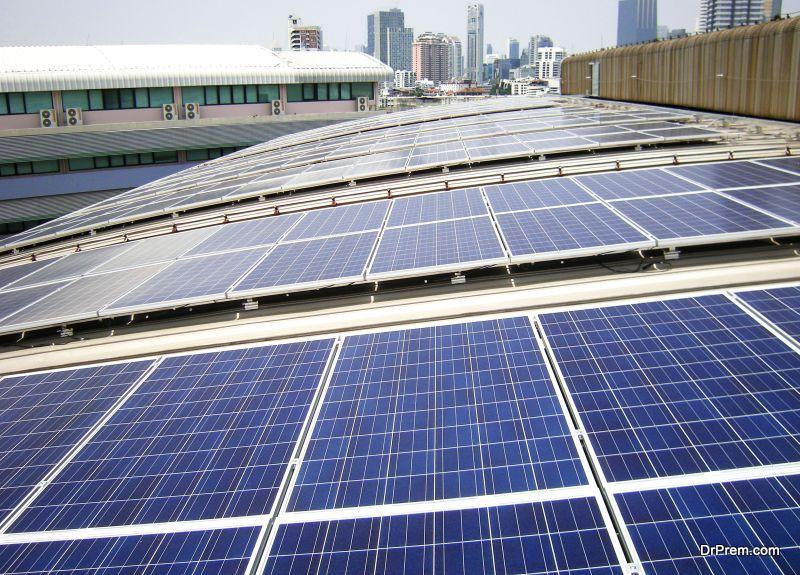In a time when environmental concerns are critically important, many people are looking for ways to make their lifestyles more sustainable. Interestingly, many eco-friendly practices can also be beneficial for your wallet.
With the right tips and strategies, you can enjoy the best of both worlds – stronger finances and a greener lifestyle.
Here are several suggestions:
1. Switch to Energy-Efficient Appliances
Start by assessing the appliances you use daily. Old, inefficient appliances like refrigerators, washers, and dryers can use a lot of electricity. Switching to energy-efficient models, marked with an ENERGY STAR rating, can significantly reduce your electricity consumption.
ENERGY STAR appliances use advanced technology to consume less energy while providing the same level of performance. Yes, there’s an upfront cost, but the amount you’ll save on your utility bills can make it worth it over time. If you plan to be in your home for more than, say three or four years, it absolutely makes sense to invest in energy-saving options like these.
2. Improve Home Insulation
A well-insulated home is key to reducing energy consumption. Good insulation keeps your home warm during the winter and cool in the summer, reducing the need for constant heating and cooling.
Not sure where to start? Check areas like your attic and walls, and around windows and doors for leaks or drafts. Sealing these can dramatically improve your home’s energy efficiency and lower your heating and cooling bills. (Seriously! Try it and begin tracking your energy bills compared to the previous year.) Materials like spray foam, fiberglass, or cellulose can be effective, depending on your specific needs and budget.
3. Address Your Financial Situation
It can be difficult to live a green lifestyle and prioritize sustainable practices when your life is overrun with the stress of debt. If your financial situation isn’t under control, you might want to take some time to think about how you can get out of debt and reclaim that area of your life.
Getting out of debt is a huge first step, as it provides a margin in your life to make eco-friendly decisions. And while there are plenty of strategies for tackling debt, Chapter 13 bankruptcy is one option for getting rapid relief. You might consider speaking with a Chapter 13 bankruptcy attorney to learn if this could be an option for you.
4. Embrace Renewable Energy
Installing renewable energy sources, such as solar panels, is one of the best ways to cut energy costs and decrease your carbon footprint.
How does it work? Solar panels convert sunlight into electricity, which reduces your dependence on fossil fuels. In essence, you’re able to harvest your own energy for household consumption. (And, in some cases, you can even sell your excess stored energy back to the energy companies.)
While the initial solar power installation can be costly, the long-term savings are pretty substantial. Plus, many governments offer incentives or rebates for solar panel installations, making them more affordable.
5. Reduce, Reuse, Recycle
One of the simplest ways to be eco-friendly and save money is by reducing your waste. Here are some practical tips:
- Try to cut down on single-use products like plastic bags, water bottles, and disposable utensils. Instead, opt for reusable alternatives.
- Bring reusable bags to the grocery store, invest in a good-quality water bottle, and use real plates and silverware at home and work.
When it comes to reusing, shopping second-hand is a great way to save money and find new uses for items that might have otherwise been tossed. Clothing, furniture, and electronics can often be found in excellent condition at thrift stores, garage sales, or online marketplaces. Not only do you save money, but you also give these items a second life, reducing the need for new resources and energy to produce new goods.
Recycling is another crucial element. By recycling items like paper, plastic, glass, and metal, you help reduce the demand for raw materials, saving energy and preventing landfill waste. Make sure you know what materials your local recycling program accepts and be diligent about separating your waste.
6. DIY and Repurposing
Before you throw something away or head out to buy something new, think about whether you can fix it or repurpose it. For example, old jars can be turned into storage containers or plant pots, and worn-out clothes can be transformed into cleaning rags or craft supplies. There are dozens of options for most household items, and you can get ideas by browsing Pinterest, YouTube, and other online platforms where people share their creative methods for repurposing everyday items.
7. Grow Your Food
Starting a vegetable garden is a fantastic way to save money on groceries while ensuring you have fresh, pesticide-free produce. Gardening is not only good for your wallet and health but also good for the planet as it reduces the need for plastic packaging and the carbon emissions associated with transporting food. Even if you don’t have a yard, many vegetables and herbs can be grown in containers on a balcony or windowsill.
The Best of Both Worlds
Going green doesn’t have to be expensive. You don’t need to buy an $80,000 Tesla or rebuild your house using green building standards. You can actually implement some very simple lifestyle choices and end up saving money in the process. As a result, you can enjoy the best of both worlds!
Article Submitted By Community Writer




